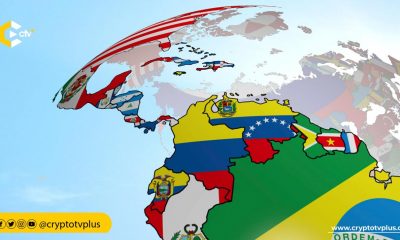FEATURED
Circle CEO predicts: 2 billion users will access Web3 by 2025

During the Annual Meeting of the New Champions organized by the World Economic Forum in China, Jeremy Allaire, Co-Founder and CEO of Circle Internet Financial, made a significant statement. He predicted that within two years, Web3 technologies would be accessible to at least 2 billion users worldwide.
Allaire shared this insight during a panel discussion on the digital divide’s impact on today’s payment systems. The panelists included Sebastián Claro, Professor of Economics at Universidad de los Andes; Royal Chen, Vice-President of Tencent Financial Technology; Ning Xuanfeng, Senior Partner at King & Wood Mallesons; and the host, Spriha Srivastava, United Kingdom Bureau Chief at Insider.
Web3 represents a visionary concept for the next iteration of the World Wide Web, leveraging blockchain technology. It is often referred to as a decentralized internet, empowering users with greater control over their data and identity.
Web3 applications are typically developed on decentralized networks like Ethereum, enabling users to interact directly with each other and applications without intermediaries. The broader Web3 ecosystem encompasses AI and the metaverse as well.
The CEO emphasized the rapid maturation of the Web3 industry as the basis for their projection. Notably, one key focus of the industry is integrating blockchain infrastructure seamlessly, allowing users to benefit from solutions without requiring an in-depth understanding of blockchain technology.
For Sebastián, his concern regarding the digital divide is that while there are good innovative payment instruments for users around the world, the misuse of user data will most likely increase.
He said that this is possible because there are no standards already put in place to manage how user data is used, especially in countries in the Global South.
Penetration of USDC in emerging markets
Furthermore, Jeremy mentioned that Circle’s stablecoin, USDC, is serving as an inclusive financial instrument for making local and global payments in emerging markets.
He also disclosed that the high demand for his company’s payment instrument in these regions stems from the desire to utilize the digital version of the US dollar for receiving funds while avoiding the less stable local currencies. Citizens are turning to USDC as a means of preserving value against inflationary pressures on their domestic currencies.
Moreover, he informed the audience that USDC is effectively bridging the digital divide. The UN Refugee Agency (UNHCR) has utilized USDC to efficiently distribute funds to refugees who have been excluded from their nation’s financial system.
He also emphasized that users can access and utilize USDC in their respective countries, regardless of whether they have bank accounts or not.
Partnership with traditional payment systems
Jeremy also emphasized to the audience that Circle, in addition to its collaboration with the UN, has established connections with businesses and payment systems worldwide. This enables accessibility to USDC, their stablecoin.
The operational structure functions by having businesses deposit a certain amount of money, and in return, Circle issues them an equivalent value in USDC.
Notably, traditional payment systems like PayPal and Visa have expressed interest in utilizing blockchain technology for global payments and settlements. Jeremy highlighted that our use case with USDC simplifies the exchange of stablecoins for business owners with anyone. To date, Circle has issued and redeemed over 600 billion USDC and facilitated $11 trillion in transactions.
The Circle leader explained the versatility of blockchain technology. While it is commonly used for developing payment systems like USDC, it also revolutionizes commerce by transforming contract creation and implementation. The introduction of smart contracts on the blockchain will reshape global business operations.
Read also;
Cultural Disparities Shape Global Payment Solutions, Says Tencent VP
























